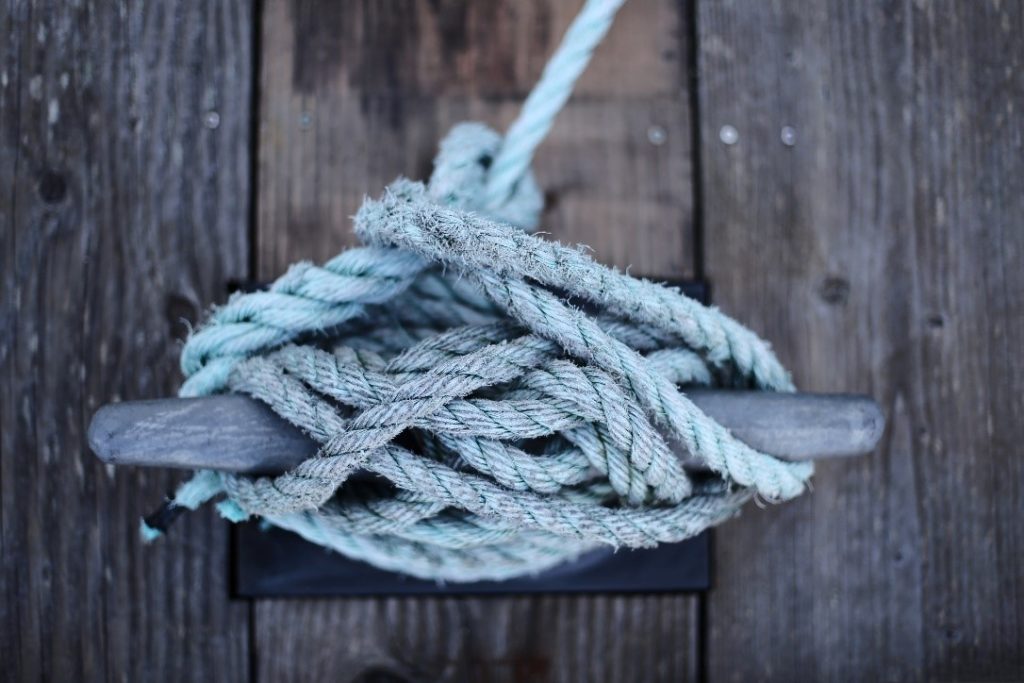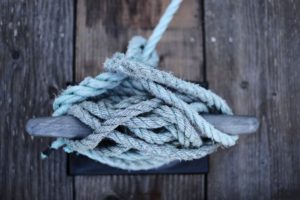Loading Masters: Risks of Mooring and Unmooring

Average reading time 6 minutes

<Loading Masters: Risks of Mooring and Unmooring>
The mooring and unmooring of ships have always been a hazardous operation during the ship docking process. In fact, since Loading Masters are tasked to oversee the mooring and unmooring process of vessels, it is of utmost importance that Loading Masters are aware of the dangers and risks present in the process. This enables them to better manage these processes and prevent any accidents from happening. In this post, mooring and the risks involved with mooring and unmooring will be looked at.
What is Mooring?
Mooring is defined as the act of fastening a boat with lines or anchors. However, it could also refer to the place or object that the vessel is fastened to. A mooring system is made up of a mooring line, anchor and connectors, and is used for station keeping of a ship or floating platform in all water depths. A mooring line connects an anchor on the seafloor to a floating structure.
Environmental factors such as wind, waves and currents, determine the types of materials used in the selected mooring system. Chain is often the most common choice for permanent moorings in waters up to a 100m depth. On the other hand, steel wire ropes which are lighter in weight and have a higher elasticity than chain, is better suited for moorings in water depths greater than 300m. Synthetic fibre ropes are the lightest weight of all three and is mainly incorporated during ultra-deep-water moorings.
Risks of Mooring and Unmooring
According to the United Kingdom (UK) Protection and Indemnity (P&I) Club, mooring injuries are the seventh most frequent cause of personal injuries, and they are the third most expensive per claim. This indicates how horrific some of these injuries can be as a result of a mooring or unmooring accident. Hence, it is important that Loading Masters are aware of these risks and the necessary safety precautions present to avoid these hefty risks and work effectively. Listed below are the three main areas of causation that the Shipowners Club have reported on in 2017, which highlight the risks of the mooring process.
- Inadequate supervision or procedures in place
- Communication failure
- Equipment Failure
Inadequate Supervision or Procedures
For mooring accidents to occur, it is often due to a lack of supervision of the task, or the presence of inadequate or non-existent procedures. In 2009, the poor procedures of the mooring process was highlighted when a mooring accident occurred due to the mooring party forward informing the ship’s bridge that all lines were clear when they were in fact still in the water. Thus, Loading Masters need to constantly be on the ball and supervise the entire process by ensuring that all personnel are cleared from these areas before allowing the mooring procedure to continue. Loading Masters should also ensure that no extra personnel are present at the mooring station except those who are involved in the operation.
Communication Failure
Another risk that mooring incidents might face would be the risk of communication failures between the various teams involved in mooring operations such as, the bridge team, the pilot and the deck mooring team as well as the tug or shore mooring personnel. Since there several stakeholders involved in the mooring process, communication breakdowns can easily incur. This risk increases when various work groups do not have a clear understanding of each other’s tasks and action. Factors that can affect and increase this risk would involve line of sight, language, background noise and the effectiveness of radio communication. Thus, Loading Masters need to be proactive and identify weaknesses that could lead to accidents during normal operations.
Equipment Failure
The last risk which we will discuss would be the risk of having a failure of mooring equipment. During the mooring process, mooring ropes and anchors are used. The risk that mooring carries is largely due to the great loads that these mooring ropes will carry, as there is a danger of them breaking while taking up all this tension. Moreover, at times the equipment used during the mooring process might have been mishandled. For example, ropes might have been stored or left on wet surfaces, while anchors might not have been replaced despite its age and was simply painted over to appear new and refurbished. Thus, Loading Masters should observe such actions and ensure that the mishandling of equipment is reduced.
How can we learn more?
Being responsible for many facets of the SBM operation, these are just some of the many risks that Loading Masters should be aware of when carrying their duties in overseeing the mooring and unmooring process. To understand more of operational processes that Loading Masters oversee and gather insights on what Loading Masters can do to perform at their highest standards, one should continously upgrade their skills.
Loading Master Certification for Oil, Gas and Petrochemicals is a 3-day training course that is held in Kuala Lumpur. Designed for anyone with immediate responsibility for loading, discharging and care in custody transfer or handling oil or gas cargoes, the course aims to assist petroleum, crude oil, and petrochemical operators in achieving a competitive advantage by having an effective and well-managed operation. This will ensure that your operational processes and workforce performs up to the highest standards and expectations achieving a competitive advantage.
Interested to find out more?


